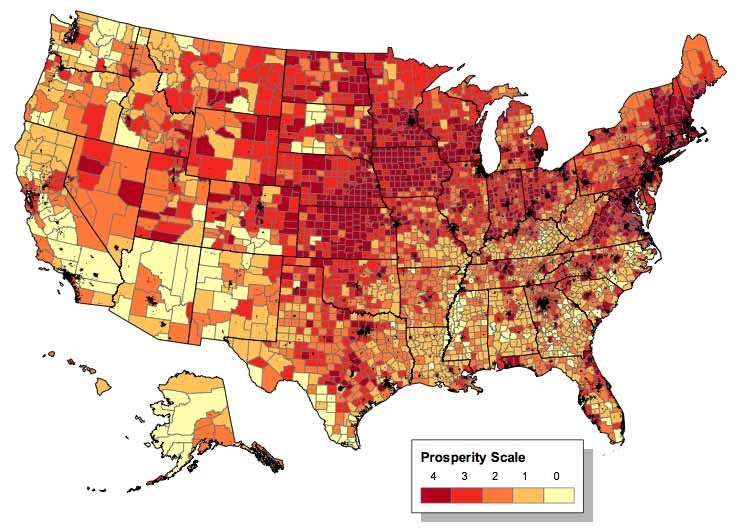Rural America Surprisingly Prosperous, Study Finds

For many people "rural" is synonymous with low incomes, limited economic opportunity, and poor schools. However, a recent study found that much of rural America is actually prosperous, particularly in the Midwest and Plains.
Researchers just had to look at things differently to see the prosperity.
The study — announced today and based on date from the year 2000 — analyzed unemployment rates, poverty rates, high school drop-out rates, and housing conditions to identify prospering communities. The result: One in five rural counties in the United States is prosperous, doing better than the nation as a whole on all these measures.
The study did not define community success in terms of the traditional measures of growth in population, employment and income, according to Andrew Isserman, an economist at the University of Illinois at Urbana-Champaign and author of the paper. Instead, it focused on outcomes: Do communities keep their kids in school? Are their unemployment and poverty rates low? Are housing conditions good and the folks healthy?
"When we started our research, people wondered whether we would find any prosperous rural communities at all using those criteria. But more than 300 of the nation's rural counties did better than the nation," Isserman said.
Counties in America's Heartland — Illinois, Indiana, and Iowa and parts of six adjacent states — came out on top with half the rural counties prospering. In the Southeast and Southwest, fewer than one in twenty rural counties prosper. (You can see all counties on this map.)
Prosperous rural counties have more off-farm jobs, more educated populations, and less income inequality than other rural counties.
Sign up for the Live Science daily newsletter now
Get the world’s most fascinating discoveries delivered straight to your inbox.
The prosperous rural counties in 2000 averaged 2 percent population growth over the previous decade. The worst-off counties, which met no prosperity criteria, averaged five times the growth at 11 percent, yet had much lower incomes.
"This finding supports our view that growth and prosperity are different dimensions, and much can be learned from studying rural prosperity," Isserman said.
Having analyzed the data on 1,300 rural counties, the research team is studying communities up close to learn the story behind the statistical results. "We want to figure out how and why these places prosper in order to help other rural places do well, too," Isserman said.
Since the study used data from the year 2000, the findings do not reflect the country's recent months of financial turmoil.
The study was published in the July issue of the journal International Regional Science Review.












